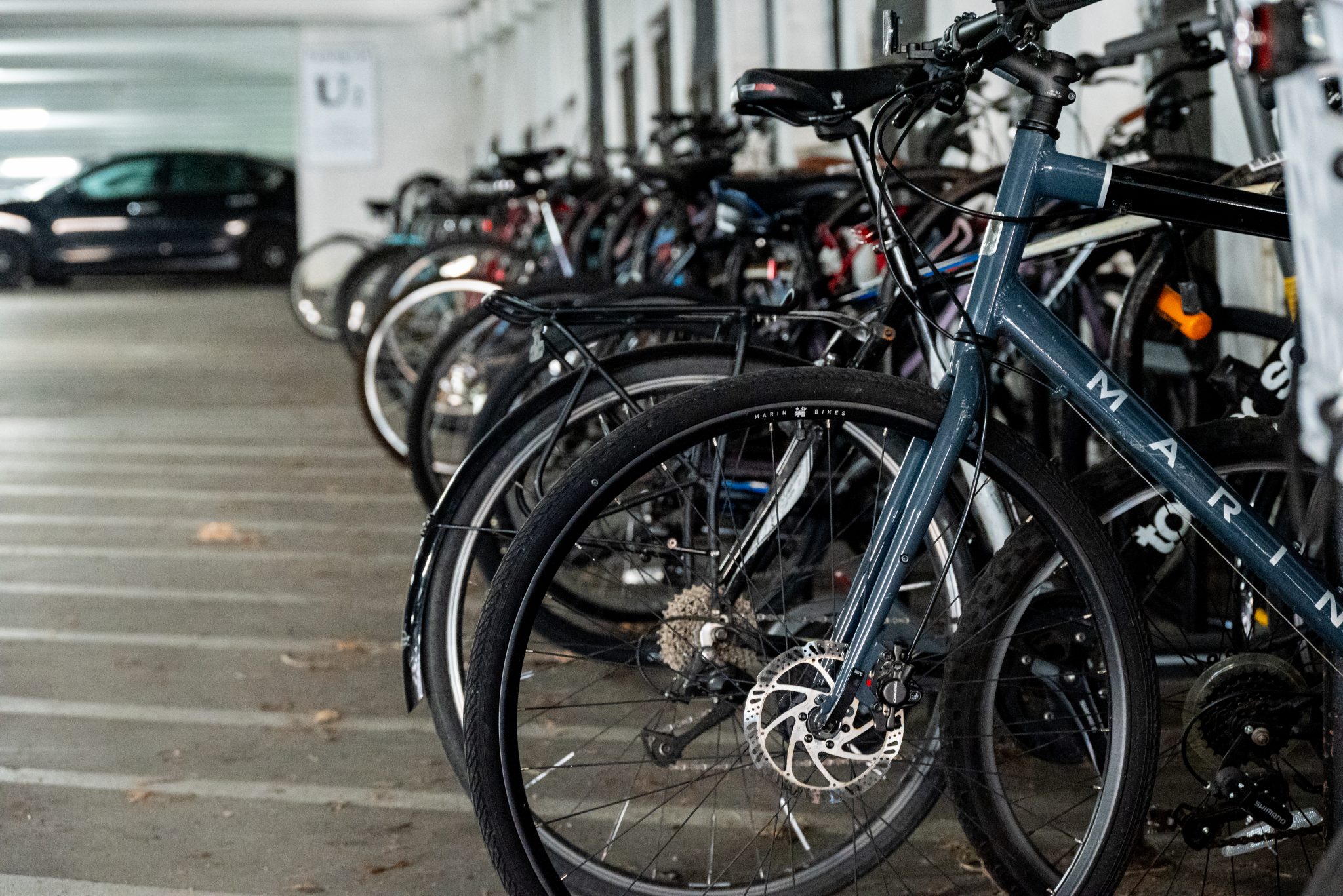Despite a campus-wide surplus of micromobility parking, University of Maryland students say that finding parking near academic buildings is difficult as racks become overcrowded during the day.
Students in Terps for Bike Lanes coined the term “bike forests” to describe areas of campus with overly crowded bike racks, including near the Edward St. John Learning and Teaching Center, club president Nick Marks said.
In recent years, micromobility vehicle use on campus has increased rapidly. There are currently more than 1,800 micromobility vehicles registered with the Department of Transportation Services. This campus has the parking capacity for 6,000 micromobility vehicles, Maddy Cirineo, the bicycle and micromobility program coordinator for DOTS, told The Diamondback.
Although there is more parking capacity than micromobility vehicles, some students say they still struggle to find parking in certain parts of campus.
Sourish Dey, a freshman civil engineering major who bikes to campus everyday, said he is frequently forced to squeeze his bike into an already crowded bike rack. Sometimes, he may have to lock the wheel to the body of his bike, which may increase the risk of someone stealing it, Dey said.
[Students with disabilities express concerns about micromobility parking habits]
Dey said he struggles to find a place to leave his bike anywhere there is a large volume of people, including academic buildings during the day.
“The bike parking is very insufficient for the volume of bikers that there are on campus,” Dey said.
DOTS recently obtained additional bike racks with capacity for 240 vehicles, according to a DOTS spokesperson.
The new bike racks will be installed on a rolling basis starting over winter break and continuing through the spring semester, the spokesperson said.
Nathan DeLuca, a senior information systems and marketing major, uses his bike almost every day to get to class, work and the gym.
He said finding bike parking near the business school sometimes forces him to park further from the entrances. DeLuca said he has also noticed a need for more bike racks on Regents Drive.
In some cases when students struggle to find parking, they will chain their micromobility vehicles to railings, posing a hazard to students with disabilities, according to this university’s Americans with Disabilities Act and 504 coordinator Emily Lucio.
DOTS created a form for input on where bike racks are needed the most and posted the link on the campus map website. Community members can provide recommendations on where bike racks should be installed and if bike racks that need repair, according to the form.
[UMD DOTS leads bike, e-scooter tours around campus to promote safe riding practices]
Out of concern that the form was difficult to access on the campus map website, the Student Government Association’s transportation and infrastructure committee placed QR code stickers on bike racks last month that link to the form. SGA’s goal with the QR codes is to spread the form’s reach to more students and most accurately identify where new bike racks are needed most, according to Ian Gould, who authored the bill to fund the project.
“It’s critical that the decisions [DOTS] make are based on data, and there has to be a process, some kind of due diligence to make sure that the decisions made aren’t ill informed,” Gould said.
The point is to make it easy for students to give their input and to maximize the amount of data collected before the bike racks are installed, Gould said. It is not realistic for students to click through multiple layers on the campus map to access the form, he added.
Dey said he has seen the stickers and is eager to see the new bike racks installed.
“Those QR codes are super,” Cirineo said. “It’s great to have the link to that form in as many locations as possible.”



